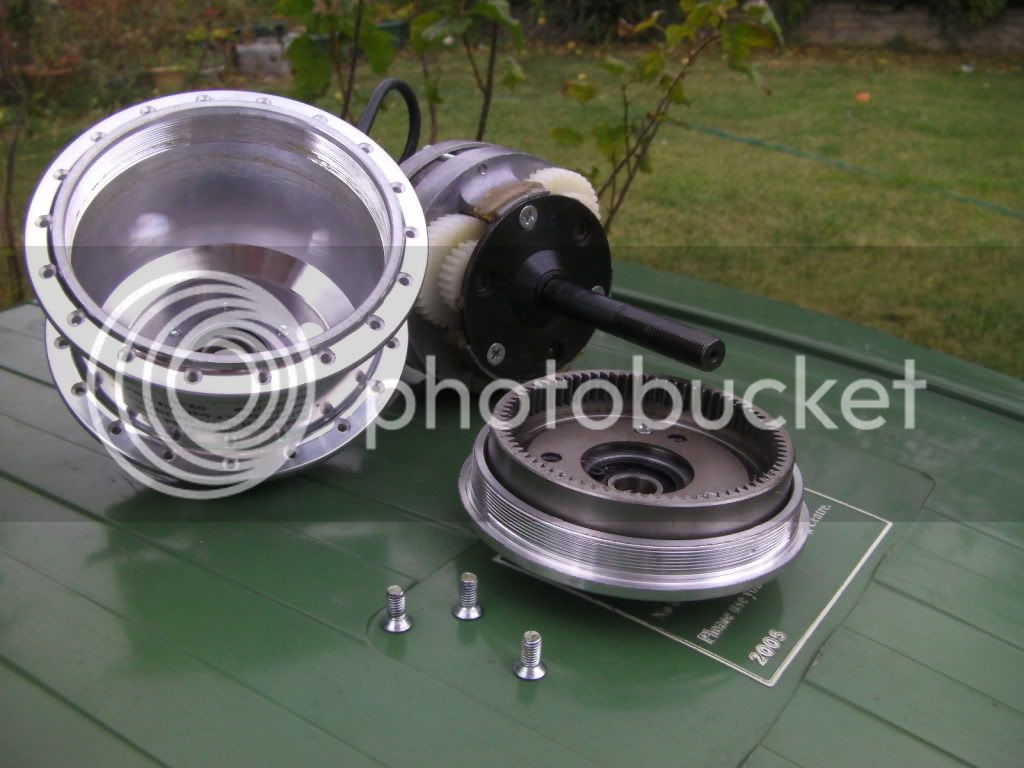specing said:
I saw one of those crude solutions (however the target motor was different). My problem with this is that I simply have nothing with which to make a 35mm hole into metal. Thus my option is some hard wood with perhaps a metal plate added to the side to reinforce it (a plate that only has a hole for the axle, which I can drill). Even drilling a cheap standard thread-on cassette removal tool to widen the hole took forever, though that was probably hardened tool steel....
Perhaps I should consider purchasing a new motor, since this repair will likely take months. Any recommendations for a 200-300W hub that is most efficient at ~15km/h = 120 rpm, 28" (steep hills around here). I've looked at the ebike simulator for MXUS XF07 and the efficiency under those conditions left much to be desired.
There is a home-made set-up that might work, but I doubt it because it's a rear motor. Take a 4' X 4' piece of 3/4" plywood and double-nut the hex-head bolts w/ large flat washers, lay it on the ground, stand on it and drop the whl. ASM on it and turn the whl.
Really, I've been though this several times and you need a wrench tool at least 2' long. The idea is, you have a machine shop make it, but machine shops are few and far between these days. Plus it would be at least $50.
You could order another another mini-motor, the Q100 is cheap enough, but you get killed w/ the freight. If you need some other stuff, it would be easier to justify.
I had a MXUS years ago and it's the top mini motor, partly because it's slightly bigger than Cute and absorbs more heat.
Any recommendations for a 200-300W hub that is most efficient at ~15km/h = 120 rpm, 28" (steep hills around here).
There are a couple things wrong w/ this statement. First off, efficiency is not the main thing when climbing hills w/ a hub motor, all geared minis are about the same in this respect. Motor speed range and driving whl size are what;s important. The first rule is, NEVER allow the climbing speed (or RPM) fall below 1/2 the top speed (No-load RPM), at which point, the system is generating more heat than motive force. You don't give us the speed range of your motor, but your target climbing RPM is too close to 1/2 of even the "201", not to mention the "328" (which would be a huge mistake in a 28" whl. (Big whl.s are hard on mini's in regards to hill climbing).
If you want to stick with a mini, your best bet is to run a low-speed (201) motor on 52 Volts (w/ a 48 V controller, w/ at least a 20 Amp max. It may seem counter-intuitive to run more power thru a mini, but that's the best way to tackle hills. The idea is, hit the bottom as fast as possible and try and maintain as much speed as possible until you either crest or realize that your motor speed is going to drop too far. At which point, it's time to jump off and push.
I don't think any mini is much better than a Q100H 201 because of the Cute"s compound gears. It spins fast.
The next step up would be the larger "5 Kg." geared motor like the MAC or BPM. You would have to make sure your Pack is stout enough to drive it.





